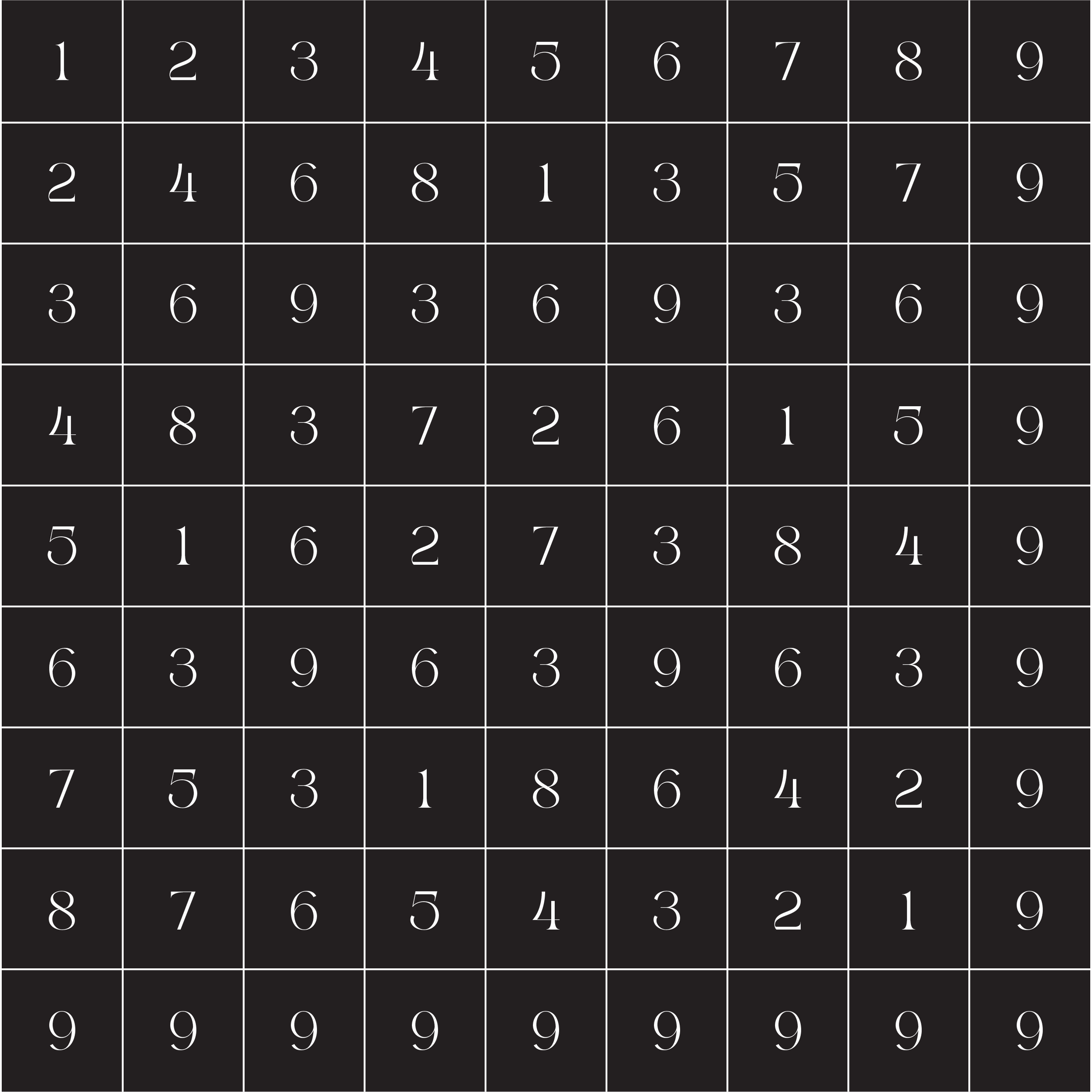On the Vedic Square & the Sacred Number 9
I must preface this “article” with there’s not much content or conclusion. I’m putting some diagrams I made out there, which I produced just for my own purposes to understand this idea a bit easier. I have attached the .AI file to the member page. If you want access to play around with these sequences on your own, you can become a member here.
Why I appreciate the vedic square so much is it reveals the harmonic underpinning to the 1-9 number system, and illustrates why the number 9 has played such a large role in many ancient cultures.
The vedic square is essentially a multiplication table (using the top row and the first column) where the resultant number is reduced to it’s base, root number. For example:
3x4 = 12
You then add the resultant number until you are left with a single digit number (between 1-9)
1+2 = 3
When we colour each number, the patterns are easily discernible.
The pattern created by the perimeter of 9s indicates that 9 multiplied by any amount of 9s always reduces to 9.
We can also immediately see patterns emerge from the 3-6-9 sequence in rows 3 and 6, as well as columns 3 and 6.
It’s important to note that this sequence will continue itself in all directions ad infinitum.
There are all numbers 1 (red) and 8 (lime) isolated.
They share a symmetrical relationship on both diagonal axis’.
Each number shows up 6 times in the base sequence.
As we will discover below, this is similar to all other pairs which add up to 9.
Relationship of Numbers 2 (pink) and 7 (green).
Again, each numbers 2 and 7 each show up 6 times within the Vedic square. This is the same condition for the below 4 - 5 sequences.
Numbers 4 (violet) and 5 (blue).
3 (purple) and 6 (cyan)
The 3-6 breaks the sequence of each number showing up 6 times. Both 3 and 6 show up 12 times.
The 3-6 lines divide the entire square into an additional set of 9, 2x2 squares.
Each of these mini squares created by the division from the 3-6-9 acts as a kind of microcosm of the entire sequence as each set of 4 numbers also reduces to 9.
The central: 7-2-2-7 = 9-9 = 9
The outer edges to the left and right: 4-8-5-1 = 9
and so on
Vedic Cubes
The vedic cubes, similar to the Vedic Square, reveals other insights about the relationship of form and the multidirectional symmetries visible when we look at the relationship of numbers which add up to nine. If you’re a member and want to play around with the vedic cube on a free, easy to use modeling software, download the 3D model here.
Pan around with your cursor. Scroll down the page at the outter left / right edges of the page.
Below: Vedic Cube - Instances of 1 (red) and 8 (lime)
Below: Vedic Cube - Instances of 2 (pink) and 7 (green)
Below: Vedic Cube - Instances of 3 (purple) and 6 (cyan)
Subscribe to get access to this post and the full collection of articles and essays for just $3.33 / month








